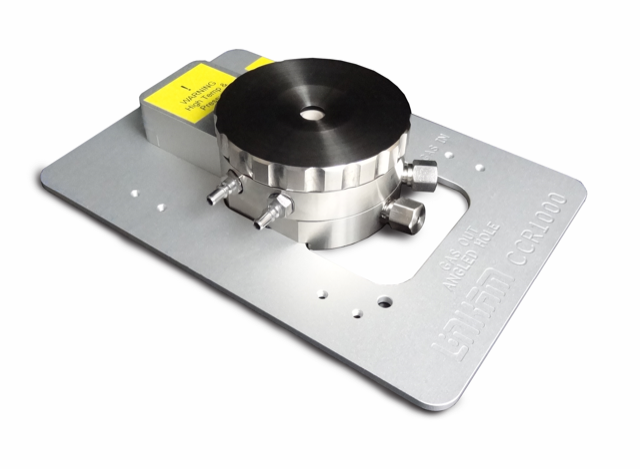Members Login

Channels
Special Offers & Promotions
Linkam highlights CCR1000 Catalysis Cell Reactor
Linkam has recently seen an increased interest in its stage that was specifically designed for the analysis of catalytic reactions: the CCR1000.
Catalysis is a technique for improving the yield or rate of a chemical reaction using a catalyst material. A wide range of catalytic materials are available; including aluminosilicates, which are used in the petrochemical industry to reduce natural materials to smaller hydrocarbons; iron oxide or copper, which are used to shift the reaction temperature of the water-gas reaction higher or lower respectively; or precious metals such as platinum or rhodium, which are used as oxidation catalysts in catalytic converters for automobiles.
Catalyst- assisted reactions generally require a unique setup and conditions in that the reaction must occur in a temperature-controlled chamber. The CCR1000 has a custom-designed chamber for experimental analysis, and can be used with a microscope, FT-IR or Raman spectrometer. In the CCR1000, samples are mounted on virtually nonreactive disposable ceramic fabric filters placed inside the ceramic heating element, which is capable of heating samples from ambient to 1000°C at rates of up to 200°C/min and pressures up to 5 Bar. It has been designed to ensure the majority of components are in direct contact with the sample and carrier gases are as nonreactive as possible. A variety of different lid window materials are available so that brightfield and Operando microscopy techniques can be used.
Researchers at the University of South Carolina studied the thermal dehydration and vibrational spectra of hydrated Lithium borohydride (LiBH4⋅xH2O) using the CCR1000 with X-ray diffraction and Raman spectroscopy. They were able to observe the evolution of metastable states as a function of temperature. Lithium borohydride is an interesting material due to its high gravimetric and volumetric hydrogen capacity (18.4 wt.% and 121 kg/m3 respectively), making it a promising hydrogen storage material for fuel cell applications.
In collaboration with Dr. Pablo Beato at Haldor Topsoe in Denmark, Linkam developed a technology to homogeneously fluidize particles inside the CCR1000 micro-reactor, and to conduct heterogeneous catalytic reactions. These processes can be easily monitored by operando Raman spectroscopy, without the drawback of laser heating or damage. Further development of this technology is on-going.
Linkam manufactures stages which can be used across a wide range of scientific fields, from food and bio-materials to nano-composites and reinforced concretes.
Learn more about CCR1000 Stage
About Linkam Scientific Instruments
Linkam develops and manufactures a broad range of temperature-controlled stages from high to cryo temperatures for both OEM and end users. These are used in conjunction with light microscopes and a wide range of analytical techniques including Raman, FTIR, WAX/SAX and other X-ray techniques to visualise and characterise the properties of materials.
Linkam stages are found in thousands of laboratories worldwide with the most successful microscope heating stage, the THMS600, selling over 5,000 units alone. Linkam is the market leader in temperature-controlled microscopy.
more news from Linkam Scientific Instruments
Media Partners



